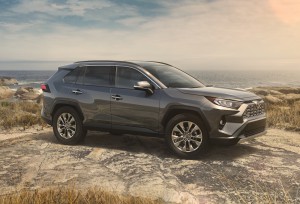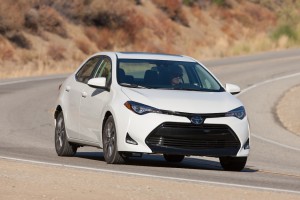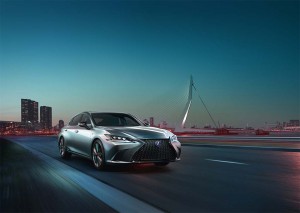Just days after Ford Motor Co. announced it would all but abandon the U.S. passenger car market in a major shift to SUVs, Toyota has underscored its commitment to sedans by announcing it will invest $170 million in its Blue Springs, Mississippi plant to prepare for the next version of its long-popular Corolla model.
Sales of sedans, coupes and other traditional models have crashed as demand has surged for the SUVs, CUVs and other light trucks that now account for two-thirds of the American new vehicle market. Ford and crosstown rival Fiat Chrysler Automobiles have all but abandoned passenger car as they ramp up light truck production.
Toyota is also boosting its utility vehicle capacity, both in the U.S. and other markets, but it is not ready to walk away from the sedans like Corolla that still generate a significant share of its annual sales. Just this week, in a splashy pair of previews in Los Angeles and at the Beijing Motor Show, the automaker’s luxury brand Lexus revealed a seventh-generation version of the ES sedan that was one of its very first two models.
The compact Corolla has suffered along with most other sedans, sales last year dipping 14.1% compared to 2016. (A new hatchback version of the Corolla helped cut the nameplate’s loss to 12.7%.) Even so, it remained one of the best-selling models for the Japanese maker, Americans purchasing 329,196 Corolla sedans and hatchbacks in 2017.
(Toyota continues to count on cars. Click Here for the story.)

The RAV4 supplanted the Camry as Toyota's best-selling model last year as buyers continue to flock to SUVs.
The automaker appears to be hoping that it can boost, or at least stabilize, demand by redesigning Corolla and investing in the Mississippi plant “to produce advanced vehicles more efficiently and better adapt to changing market needs,” it said in a statement.
That appears to suggest that the Southern factory will become more flexible than it currently is, something that could allow Toyota to quickly shift between various models to reflect ongoing consumer demand. To further permit flexibility, the next Corolla will shift to the Toyota New Generation Architecture, or TNGA, the platform that is being used for almost all of its new passenger car products, as well as many of its light trucks.
That includes the latest-generation RAV4 crossover-utility vehicles. In a striking sign of the times, the compact ute generated 407,594 sales last year, a 16.1% increase over 2016 – making it the best-selling model for Toyota in the U.S., as well as number four on the overall U.S. market sales list.
(Click Here to see more about Toyota, Subaru replacing sports car.)
At the same time, the Camry, which had long been Toyota’s top model and number four for the U.S., took a tumble. The midsize sedan managed to post a minor 0.1% decline for the full year, at 387,081 sales, however, thanks to the introduction of an all-new 2018 model. Camry actually recorded its best-ever sales for December, at 43,331.
Toyota was one of the first automakers to enter the crossover segment with the RAV4, and it last year sold 1.3 million light trucks – including Lexus numbers – compared with 1.15 million passenger cars. That’s actually more balanced than the industry as a whole, and Toyota is, if anything, pushing to gain a greater foothold in the SUV and CUV segments with not only the launch of the redesigned RAV4 but all-new models such as the small Lexus UX coming for 2019.
But, as the Corolla investment and the new Lexus ES show, it will continue to ride the passenger car market and may even hope to gain more opportunity there as Ford drops all sedan models and only retains the Mustang coupe.
(To see more about Lexus betting big on the new ES, Click Here.)
“We understand the importance of SUVs, but we also understand the importance of great sedans,” said Cooper Ericksen, the brand’s U.S. marketing chief at the debut of the Lexus ES in Los Angeles.



One thing I have noticed is that the Ford and FCA articles that talk about abandoning cars only speak of Ford USA and Chrysler/Dodge. They don’t point out that Lincoln still builds a couple cars, and Ford Europe builds several. FCA may be reducing Chrysler/Dodge cars, but they still build Fiat and Lancia, let alone Alfa Romeo and Maserati. My fear would be that if any company relies completely (or even primarily) on one vehicle segment, should an unexpected shift occur in the market, they could be in the same situation the American auto industry was in 1973 (oil embargo).
Just read (May 3, 2018) an interesting article in the WSJ entitled: “The Real Reason Ford is Phasing Out Its Sedans”. Gives an interesting insight as to the (supposedly) real reason why Ford (and the industry in general) is phasing out cars for trucks. Any thoughts?
As usual, Dan hits some very good points…